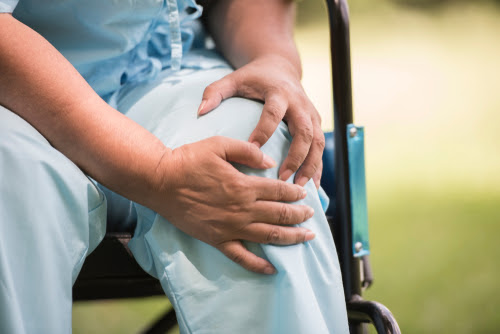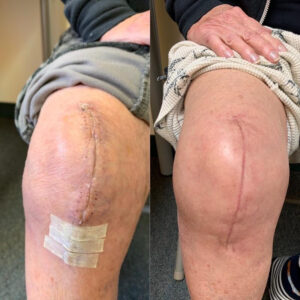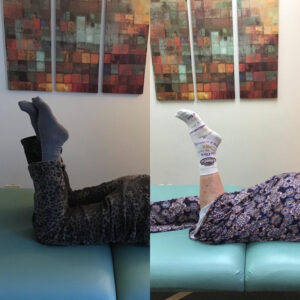Post Procedure – Leg, Meet Your New Knee!
Medical Procedures: Adding Bridging for a full recovery
“Kinetic Konnections was different than my Physical Therapist. They looked at the bigger picture of how my knee had to work, including with the hip, foot, and other leg.”
Even with thorough planning, and pre-op exercises, the reality of post-surgical pain and discomfort is surprising to most people. One client recently opted to have a knee replaced when the bone-on-bone pain was regularly impacting her ability to get through her day.
She expected to be in pain and knew she would be up soon after surgery to help recovery. What she didn’t expect were the odd sensations around the entire knee, the tightness in her foot, and discomfort at the hip. Also, the pain medications messed with her sleep and digestion.
Three weeks after surgery her daughter brought her into the office. Big changes with that one session! The pain meds became a thing of the past. Sleep was better and she was soon walking without a cane. At the eight week surgical follow-up all the discharge milestones were met.
See how Bridging was able to help at various points along her recovery.
Introducing the new and old parts
One of the most basic Bridging concepts following a surgery is to simply support the parts of the body that were impacted and use gentle movement to restore movement flow through the affected area. By gently matching up the movement and flow within the affected area, the circulation, communication, and coordination on both sides is able to quickly re-establish itself.
“My physical therapist was great with helping overall strength in my core and leg. The (Bridging) movements were different. After my appointment at Kinetic Konnections my walking was just easier. My knee and leg flowed. I felt steadier and more relaxed.”
~ Pam L, after a recent knee replacement
Movement helps it all look better!
|
Getting that last five degrees of movement
Kinetic Konnections looked at the other aspects of motion at my knee including extension. After these connected, I was able to pass my discharge criteria of 120 degrees.” Photo shows flexing right knee only by assisting with the left leg at Week 7 (left). The right leg was now able to flex completely on its own at Week 9 (right). |
Specific ways that Bridging speeds up your recovery
Some of the common issues you have after knee replacement and what the Bridging technique’s framework finds:
- Sleeping isn’t great. Often awkward positioning during recovery leaves your overall body off-center and this impacts your nervous system’s ability to calm down for sleeping.
- The knee feels like it buckles or clicks. The joint replacement procedure disconnects how the front and back of the knee work together. The knee does more than just bend. The buckling and clicking often relate to the knee’s ability to stop movement, rather than just moving.
- Odd pains at the ankle or hip. Before you had surgery, you compensated for the bad knee. Those compensations don’t automatically go away with the new knee and knee exercises.
All of your compensations, and the complete set of knee functions are taken into account and addressed with the Bridging technique used by Kinetic Konnections.
Wondering if Bridging can help you?
When you have a medical procedure done, let Kinetic Konnections be your next stop. All invasive procedures have some impact to the fluency of movement in your body. The stress created often translates into pain or tightness for you.
Often in one or two sessions our use of the Bridging Technique’s gentle movements restores your movement in the impacted area. You feel better, and often the area looks better! Less swelling, better movement, better coloration and faster overall recovery.


 (Photo shows 3 weeks (left) and 6 weeks (right) post-replacement. Bridging work was not explicitly done at the scar.
(Photo shows 3 weeks (left) and 6 weeks (right) post-replacement. Bridging work was not explicitly done at the scar. “I was having trouble getting full range of knee flexion with the Physical Therapy exercises. (120 degrees flexion was the discharge threshold.)
“I was having trouble getting full range of knee flexion with the Physical Therapy exercises. (120 degrees flexion was the discharge threshold.)